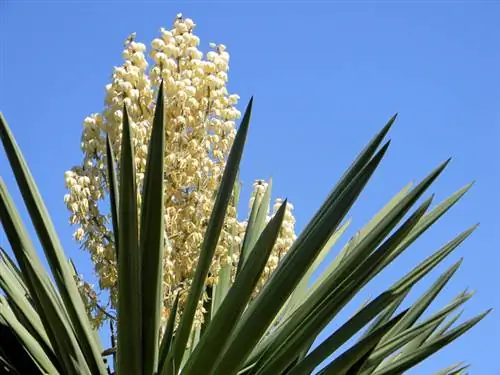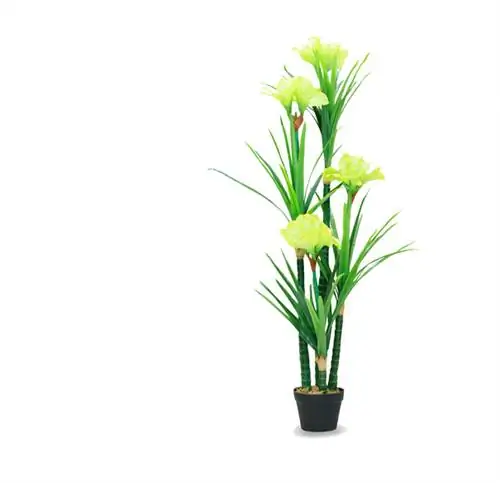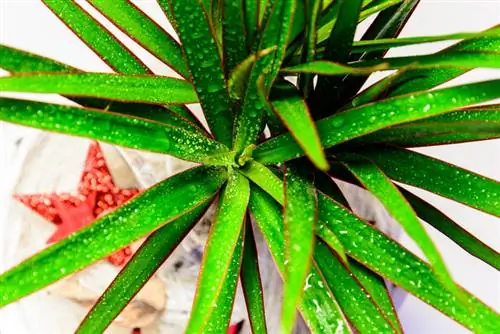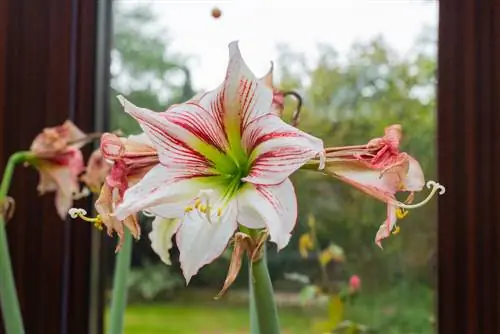- Author admin [email protected].
- Public 2023-12-16 16:46.
- Last modified 2025-01-23 11:21.
Even if you hear it often or you can occasionally read it on the trade labels: the term yucca “palm” is incorrect. Despite all the external similarities, the yucca is by no means a palm tree, but rather an asparagus plant from the agave family. The plants, also known as palm lilies, form a fairly extensive genus with around 50 different species and 24 subspecies - some of which are very popular as house or garden plants. Whether and how often the plants bloom depends on the species and the specific growing conditions.

When does the yucca palm bloom?
An indoor yucca, like the giant palm lily (Yucca elephantipes), blooms extremely rarely, usually only under optimal conditions and after a few years of growth. Garden yuccas, such as Yucca filamentosa or Yucca gloriosa, bloom regularly, but only after about 10 years in the right location.
Indoor yucca only blooms very rarely
The giant palm lily (Yucca elephantipes), which is very popular as a houseplant, for example, blooms very rarely and almost never when grown indoors. In order for the very fast-growing plant to produce flowers, it should be a few years old and have optimal growing conditions. This includes putting the plant on the balcony or terrace during the warm summer months, and it should also be exposed to a short period of cold (but no frost!) in the winter.
Garden yucca only shows flowers after ten years at the earliest
The garden yucca, on the other hand, usually a Yucca filamentosa or a Yucca gloriosa, blooms tirelessly every year, provided it feels comfortable in its location. The flower shoots can grow up to three meters high and are covered with numerous flowers not unlike lily of the valley. Such a blooming yucca palm is truly magnificent to look at. If your yucca isn't blooming, it could be due to the wrong location - but also because the plant is simply too young. Yuccas usually only bloom when they are around 10 years old. Withered shoots should always be removed.
Tip
Caution: Much of what is offered on the Internet by various dealers and dealer platforms under the name “Yucca” is actually Dracaena fragans. This is related to the yucca and looks quite similar to it.






